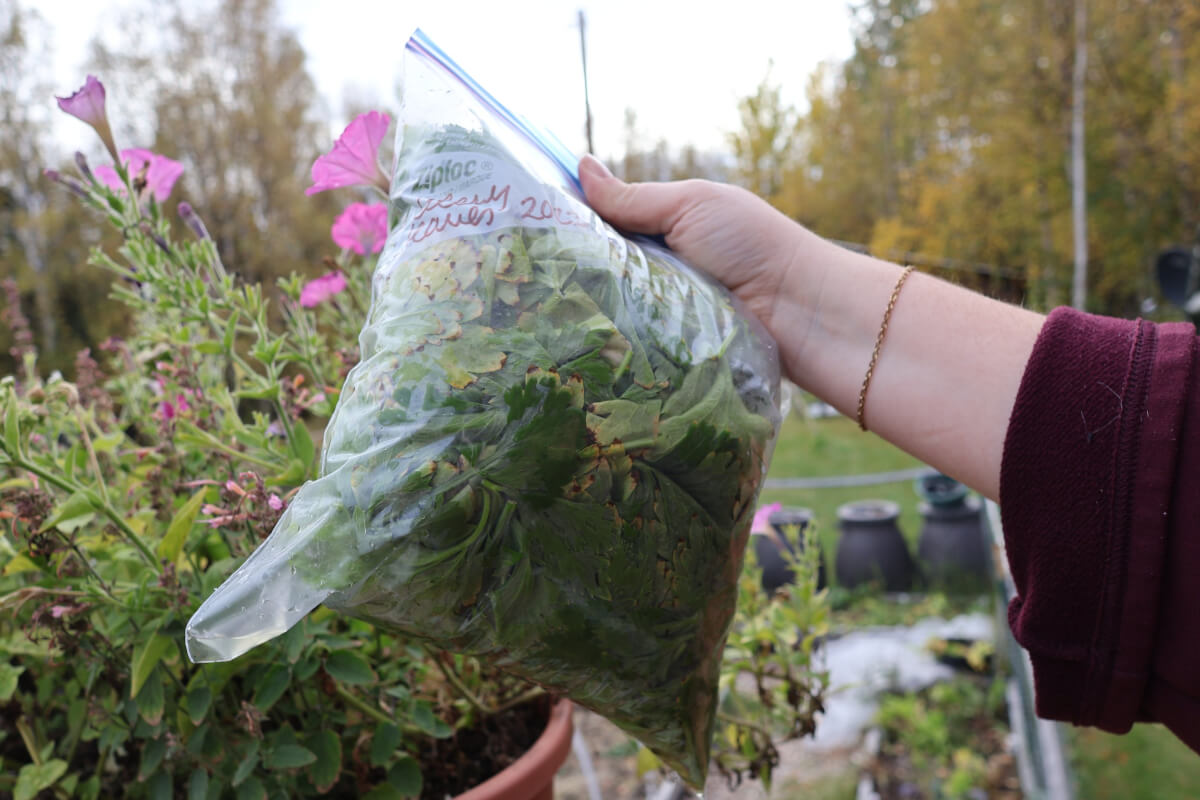More on celery! When you’re processing your celery, don’t toss those leaves and “unusable” stems away. They are also incredibly valuable!
We aren’t the kind of gardeners that keep every little bit of our plants. We usually don’t eat radish tops or countless other greens from our plants, just because they’re edible and you can. We have plenty enough “fine produce” for that. Often times, those greens provide us more value as compost than nutrition. But, celery leaves are a decided exception to that rule for us.
Celery leaves provide an immense amount of celery flavor. They are excellent for making vegetable and meat stocks, meaning you don’t have to dig into your valuable celery for these things. Celery is a dominant ingredient in a lot of broth and stock recipes. Since you’re discarding your veggies with stocks and broths anyway, this is an exceptional way to increase the value of your crop.
For this purpose, you really don’t need to go through the blanching process to extend the lifespan of the celery leaves in your freezer. Since really all we’re after here is the flavor, and not any texture, there’s no reason at all to go through “enhanced” preservation techniques like blanch & freeze.
We often will make a vegetable stock around our final harvest time, using up a lot of greens like this. It’s especially useful to use up some of our “blemished” vegetables that aren’t well suited to longer term storage. This achieves multiple goals for us and reduces our waste of “less than perfect” produce.
Usually around the holidays, we’ll make our turkey and sometimes other meat stocks. We’re often using our time off around these times to cook delicious, seasonal meats and leverage the carcasses and scraps to make up our longer term stocks and broths. These celery leaves come in exceptionally handy for this as well.
You can also use celery leaves in soups, stews and other dishes where you might want to absorb the flavor of celery. Most people don’t enjoy eating celery leaves, so like with bay leaves, it’s fairly customary to fish them out prior to serving. There’s no reason you “can’t” eat them, though.


